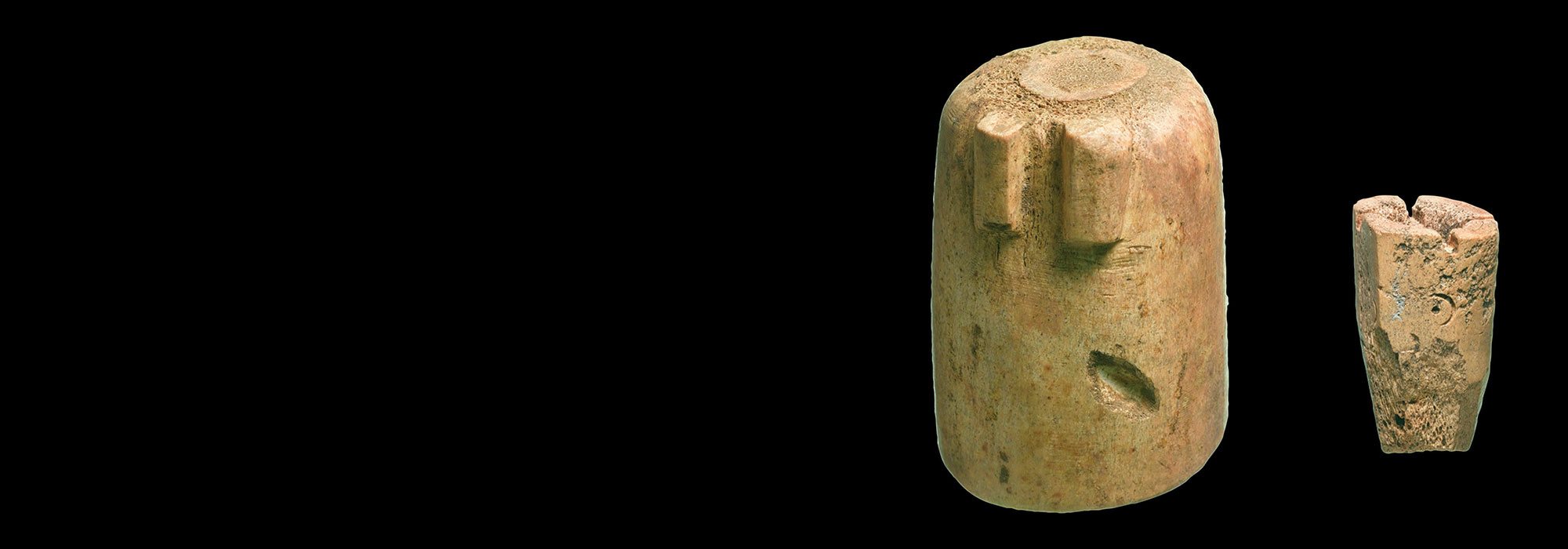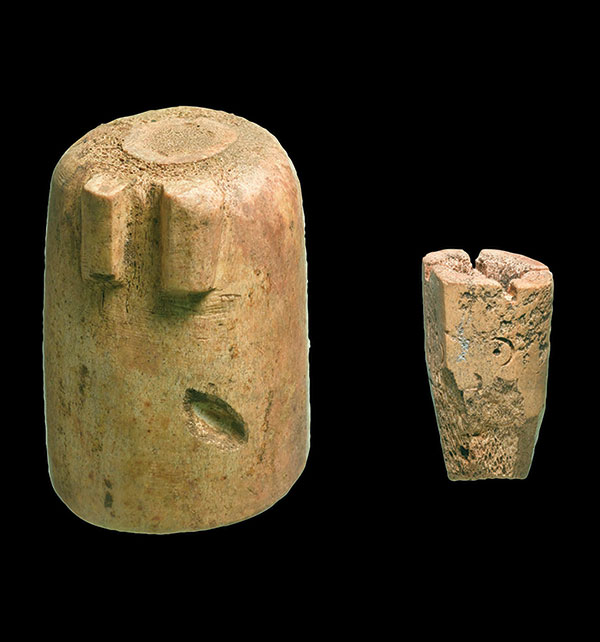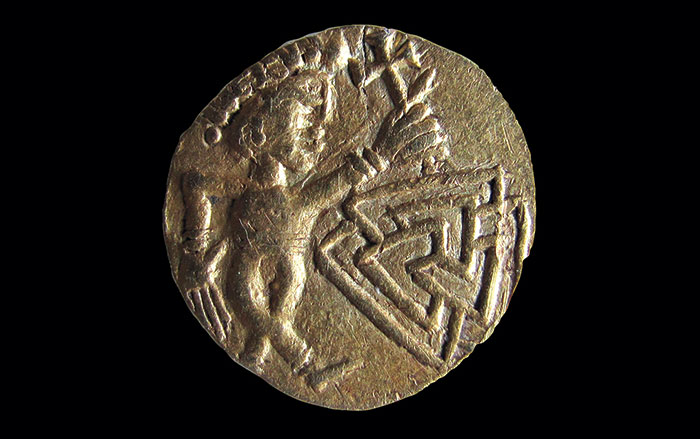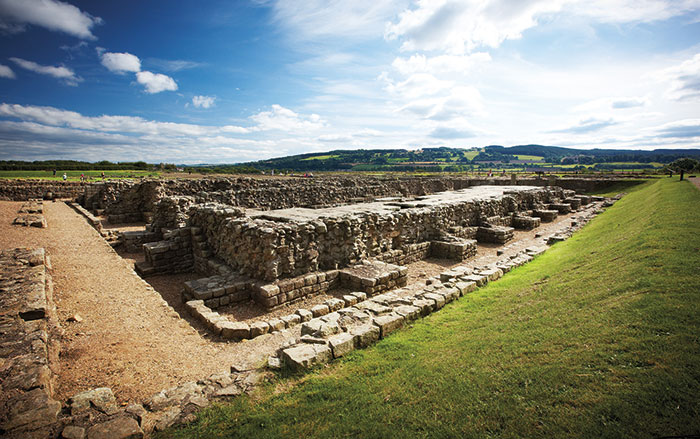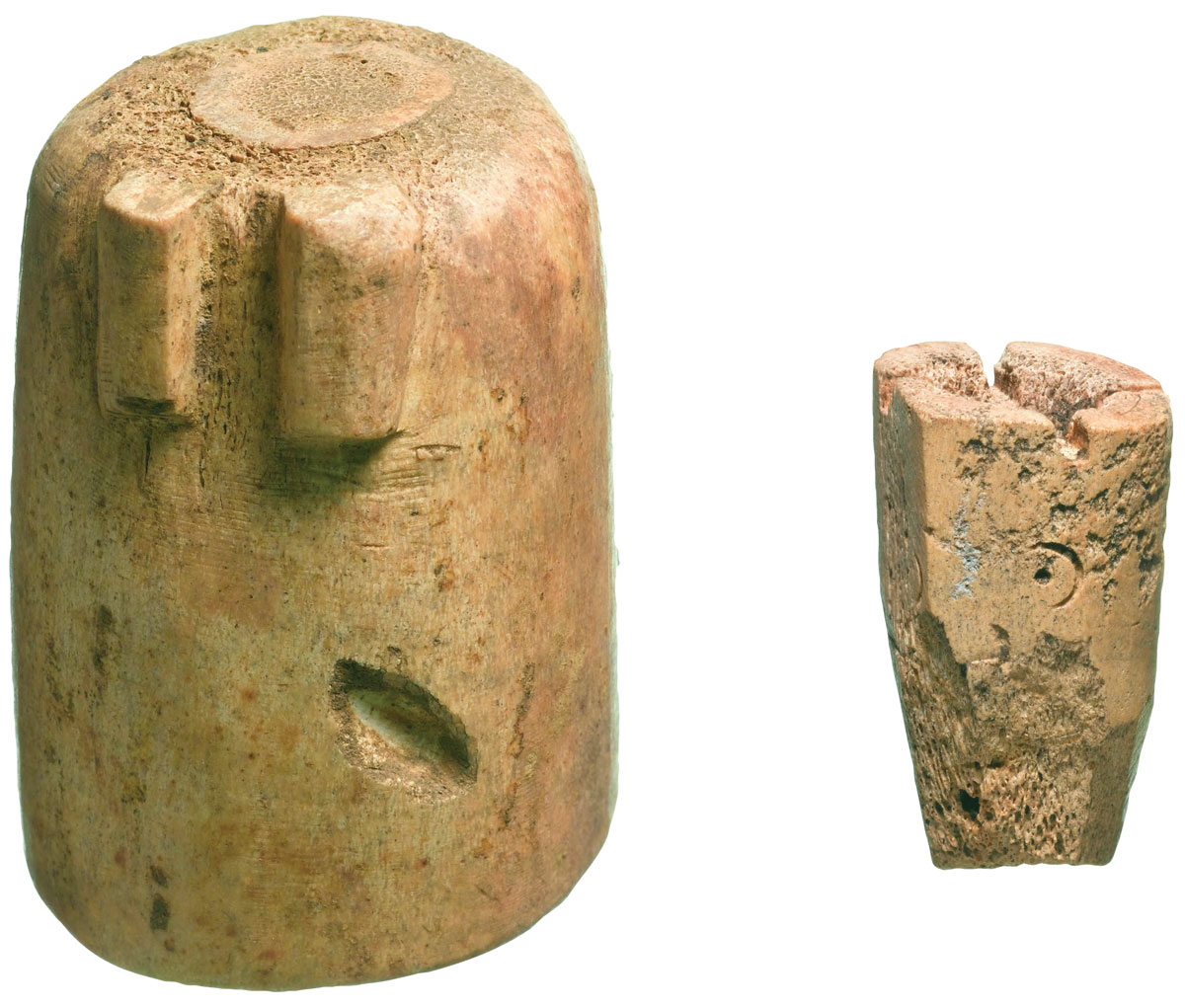
What is it?
Chess pieces
Date
Late 12th century A.D.
Material
Antler
Found
Northampton, England
Dimensions
King’s head (left): About 1 inch long and up to half an inch in diameter. Bishop (right): 1.6 inches long and 1.1–1.2 inches in diameter
Soon after it came to Europe from the Arab world in the twelfth century, chess became immensely popular among the upper classes. Kings, queens, nobles, and monks would pass their leisure time playing the game using finely carved pieces of elephant or walrus ivory that depicted characters from medieval court life. Game pieces used by the less well-off, including these two found recently in Northampton, were fashioned of less lavish materials, such as antler and bone, and were less ornate. “These simple chess pieces followed the basic Arabic forms, where anthropomorphic figures were prohibited,” says archaeologist Andy Chapman of Museum of London Archaeology Northampton, who is studying the artifacts.
According to Chapman, single stylized chess pieces, 70 of which have been found in Britain, are usually located in domestic contexts. But these two were unearthed in what archaeologists believe was a workshop where chess pieces were being manufactured—several red and fallow deer antlers were also excavated—making this the first time such a shop has been identified. It doesn’t appear, however, that either piece ever would have been used, as both were discarded during production. The king’s head (left) was thrown away before it was set onto its body, perhaps, says Chapman, because the antler’s spongy core was exposed and the artisan couldn’t place the right eye correctly—although he gave it a try and put one in the wrong spot before giving up altogether. The bishop (right) had two heads of different sizes, likely because some antler broke away during manufacturing, and was tossed.


